Products
Commercial-Scale Systems
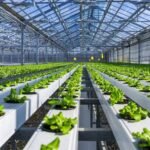
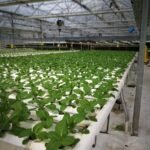
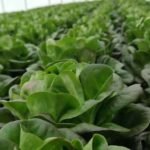
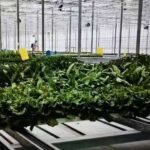
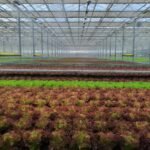
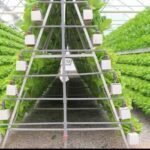
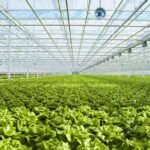
Commercial Aquaponics Systems for Large-Scale, Sustainable Food Production
Commercial-scale aquaponics systems are engineered for high-efficiency production of both fish and vegetables by combining recirculating aquaculture systems (RAS) with hydroponic grow beds. These integrated systems offer a scalable, resource-efficient solution for sustainable agriculture.
1. Key Components of Commercial Aquaponics Systems
Modern commercial aquaponics integrates advanced components to ensure optimal performance and maximum yield:
- Fish Tanks: Designed for high-density rearing of species like tilapia or catfish, with precise control over water quality, oxygenation, and feeding.
- Grow Beds: Large-scale hydroponic platforms using Nutrient Film Technique (NFT) or Deep Water Culture (DWC) to cultivate fast-growing vegetables like lettuce, basil, or tomatoes.
- Filtration System:
- Mechanical Filters: Remove solid waste through bead filters or drum filters.
- Biofilters: Use beneficial bacteria to convert fish waste (ammonia) into plant-friendly nitrates.
- Automation & Monitoring: Equipped with sensors for pH, dissolved oxygen, water temperature, and nutrient levels. AI-driven systems help adjust parameters in real-time for maximum efficiency.
2. Benefits of Commercial Aquaponics Systems
- High Productivity: Crops like lettuce can grow 2–3 times faster than in traditional soil, maturing in just 3 weeks.
- Water Efficiency: Saves up to 90% of water through closed-loop recycling, making it ideal for arid and urban regions.
- Chemical-Free Farming: Eliminates the need for synthetic fertilizers; fish waste serves as a natural nutrient source.
- Economic Viability: Dual revenue streams from fish and vegetables. Many commercial systems achieve ROI within 12 months.
3. Future Trends in Commercial Aquaponics
- Smart Aquaponics: Use of AI and IoT for predictive analytics and intelligent system optimization (e.g., feed-to-yield ratios).
- Circular Economy: Integration with waste-to-energy systems (e.g., turning fish solids into biogas feedstock).
- Vertical Integration: Adoption of stacked grow beds and vertical NFT towers for urban farming environments.
Conclusion
Commercial aquaponics systems represent a cutting-edge approach to food production that is both scalable and sustainable. Ideal for urban farms, greenhouses, and water-limited regions, these systems are transforming the future of agriculture. With continuous innovations in automation and renewable energy integration, commercial aquaponics is poised for global adoption.
Contact us to learn how we can help design and install a high-efficiency aquaponics system tailored to your business goals.
